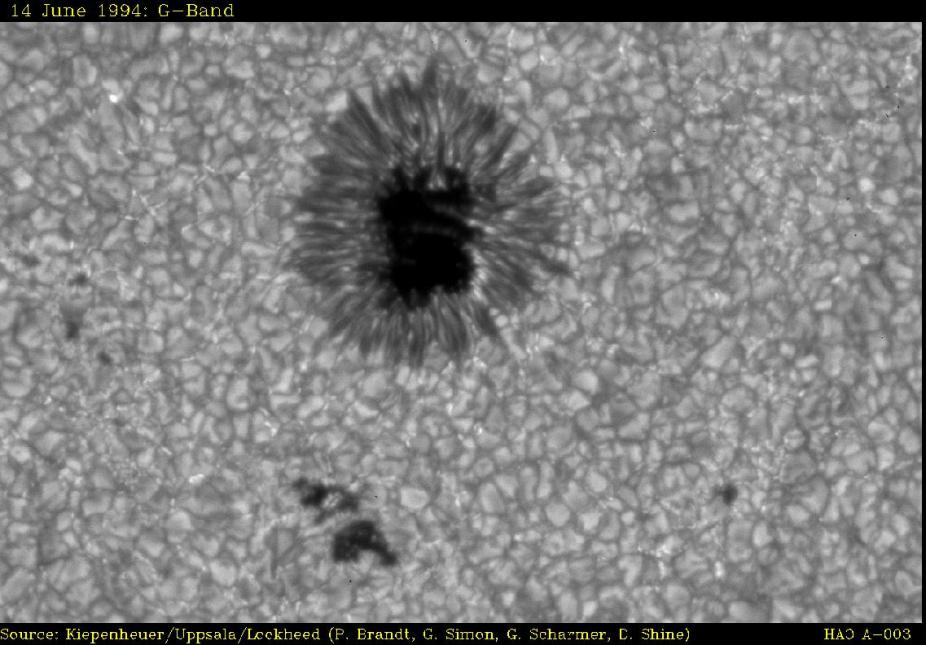Sunspot and Granulation
This high resolution image shows a close-up view of a moderately large sunspot. The field of view covers about 60000 km horizontally, and 38000 km vertically.

June 14, 1994: G-Band image.
The penumbral diameter of this sunspot is about 16500 km; the Earth, with an equatorial radius of 6378 km, would cover up the umbra but not the penumbra. Sunspots can be quite small (~1500 km diameter), and reach sizes up to 50000 km. While it is known that the darker appearance of the umbra and penumbra is due to their lower temperatures, the sharpness of the boundaries between the umbra and penumbra, and between the penumbra and photosphere, is a phenomenon that is not yet properly understood. While sunspots, especially large ones, can be fairly long-lived (their lifetimes being measured in weeks and months), they do eventually disappear, often by successive fragmentation into smaller and smaller sunspots. Likewise, sunspots do not suddenly appear fully grown, but usually show up as small structures, irregularly shaped and usually without a penumbra (darker structures without penumbra are usually referred to as pores), and grow within days or sometimes weeks to their full size. Another striking feature on this image is the cellular pattern so clearly visible outside of pores and sunspots on this photograph, with brighter regions surrounded by narrow, darker boundaries. This pattern is called granulation, and is associated with large scale fluid motions at and just below the photosphere; the brighter, central regions correspond to rising hotter fluid, and the darker, narrow lanes to sinking, colder fluid. Typical speeds in granular flows are of the order of a few kilometers per second.
Written By P. Charbonneau and O.R. White–April 18, 1995